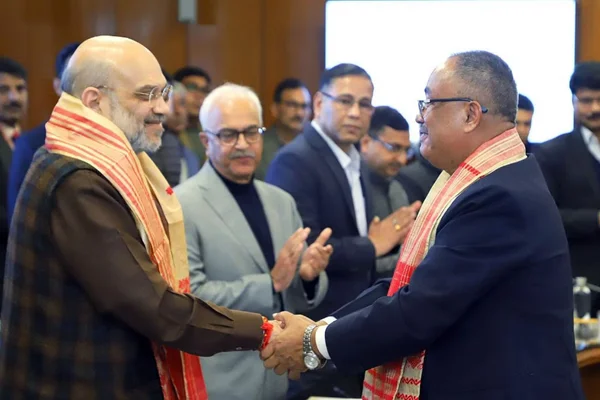The Central government recently signed a historic tripartite peace agreement with the pro-talks factions of the United Liberation Front of Asom (ULFA).
- Earlier, a similar peace deal was signed with Manipur based insurgent group – United National Liberation Front (UNLF).
About the tripartite peace agreement:
- The tripartite accord involves the ULFA faction, the central government, and the Assam government, aiming to bring lasting peace to Assam.
About the ULFA:
- The ULFA aimed at the “restoration of Assam’s sovereignty“
- ULFA (I-Independent), which still has not surrendered, mainly follows the agenda of the Paresh Baruah.
- It was formed in 1979 by Bhimakanta Buragohain, Arabinda Rajkhowa, Anup Chetia, Pradip Gogoi, Bhadreshwar Gohain and Paresh Baruah.
- It still has camps in Myanmar, and previously had camps in both Bangladesh and Bhutan.
- Lying deep in jungles and hilly areas, these camps act as launchpads for cross border operations, and provides shelter after the insurgent act.
- It also has links to Pakistan’s Inter-Services Intelligence (ISI), which has trained ULFA insurgents in the past.
Background and history of ULFA:
- Assamese people have their own, unique culture and language, and a strong sense of identity.
- In the 19th century, as the region’s tea, coal and oil economy attracted migrants from all over, the indigenous population started to feel insecure.
- Many refugees including from the erstwhile East Pakistan infiltrated Assam, competing for resources and threatening identity of Assam.
- This led to the formation of ULFA and a 6-year-long mass movement.
- Eventually, the Assam Accord, seeking to “find a satisfactory solution to the problem of foreigners in Assam” was signed in 1985.
- In 1990, ULFA was declared a banned outfit due to its subversive activities and Operation Bajrang was launched by the Central government.
- The government-initiated efforts in 1991 to encourage ULFA members to surrender after the death of deputy commander-in-chief Heerak Jyoti Mahanta.
- In 1992, a large section of 2nd rung leaders “Surrendered ULFA (SULFA)”, and its members surrendered to the government.
- The original ULFA split into 2 groups, the one was led by Arabinda Rajkhowa and another was led by Paresh Baruah.
- The Arabinda Rajkhowa, was arrested in Bangladesh in 2008 and handed over to India.
- Later, the Rajkhowa-led group decided to join peace talks.
- In 2010, Sanmilita Jatiya Abhivartan (SJA), a group of Assam’s civil society organizations, facilitated talks between ULFA and the Central Government.
What were ULFA’s demands?
- The Rajkhowa-led ULFA faction started talks in 2011, focusing on demands such as recognition of 6 communities as Scheduled Tribes (ST) in Assam.
- ULFA’s demands include constitutional arrangements, identity protection for locals, financial packages, mine or mineral royalties, and measures against illegal migration.
Key highlights of the accord:
- The provisions protect the land rights and political rights of the state’s original inhabitants (indigenous people).
- It provides for a Rs 1.5 lakh crore financial package, which includes setting up of an IIM (Indian Institutes of Management) and an IISER (Indian Institutes of Science Education and Research), new railway and national highways in the state.
Challenges:
- The peace pact addresses the pro-talks faction, while the anti-talks faction (ULFA-I), led by Paresh Baruah, remains insistent on a sovereign Assam.
Ref: Source
| UPSC IAS Preparation Resources | |
| Current Affairs Analysis | Topperspedia |
| GS Shots | Simply Explained |
| Daily Flash Cards | Daily Quiz |



